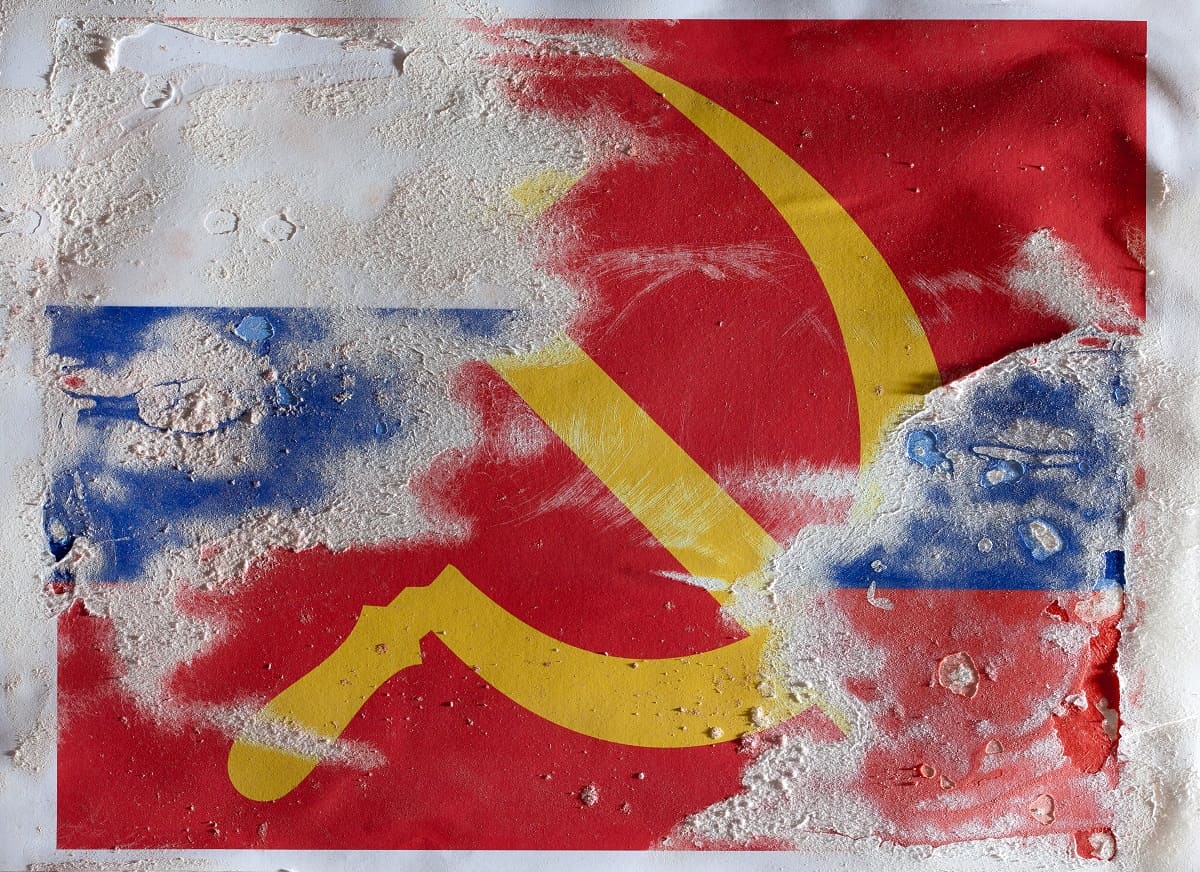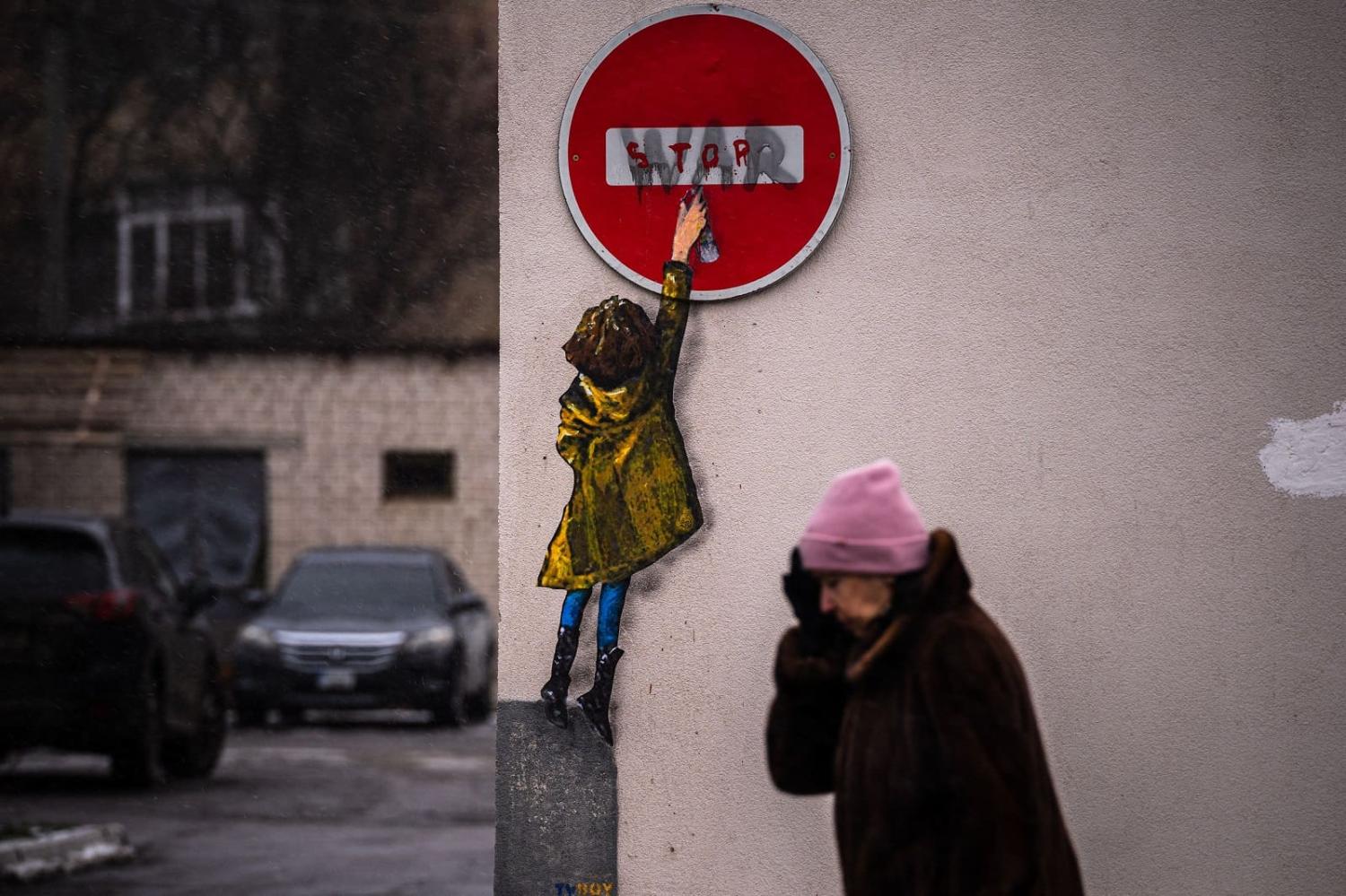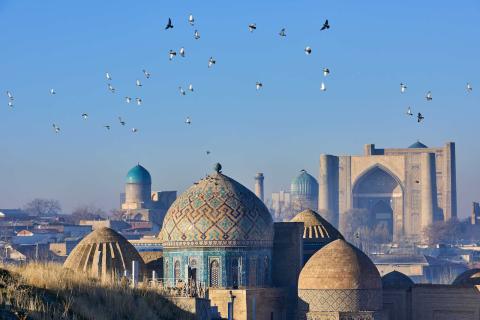Nearly one year since the Russian invasion, no end is in sight to the war in Ukraine. It’s become a conflict of grinding, static attrition, largely due to the constraints on fighting imposed by winter. But both sides are clearly gearing up for renewed offensives over coming months.
While last autumn’s successful Ukrainian offensives, first in Kharkiv then in Kherson, threw Russia on the backfoot militarily, Moscow is now reconstituting its forces and absorbing newly-mobilised conscripts amid claims that a further call-up is in prospect. Russia’s defence industry is working overtime to replenish the sizeable losses of equipment, augmented with missiles and drones from Iran.
While it too has suffered huge losses of troops and equipment, Ukraine is likewise building up its military reserves. Kyiv continues to receive large quantities of Western military assistance. The decision by Germany and the United States to provide main battle tanks (with their superior armour, weaponry and control systems) is a potential game-changer – although deployment of the tanks will take time.
Ukraine will seek to build on last autumn’s battlefield successes, recovering further territory from Russian occupation. Kyiv is sensibly not showing its hand regarding likely vectors of any offensive, but breaking the “land bridge” between Russia and occupied Crimea through Zaporizhzhia is a logical objective.
Meanwhile, Russia will press to gain more territory in the Donbas to consolidate its position in eastern Ukraine and support its claims that these annexed territories are now part of Russia. It may still harbour more ambitious military objectives across Ukraine.
At this stage, then, there’s little prospect of a negotiated end to hostilities. Neither side is ready or willing to compromise: indeed, positions have hardened and become more entrenched. Yet even if negotiations were in prospect, it’s hard to envisage an outcome that would satisfy both Ukraine and Russia, and thus translate into a lasting settlement – given their mutual visceral antipathies and irreconcilable objectives.

Any negotiated outcome seems more likely to produce merely an uneasy truce, leaving unresolved elements on all sides aggrieved and dissatisfied with the compromises involved. The result would be continuing insecurity and instability for the region.
This unhappy prospect reflects the wider motivations underlying Russia’s actions. Russia’s invasion of Ukraine represents a defiant effort by Moscow to resist further erosion of its sway over its “near abroad”, asserting Russia’s entitlement to a protective sphere of influence around its borders. This is motivated by both imperial nostalgia and realpolitik calculations about Russia’s security needs. Yet Putin has over-reached in invading Ukraine – a miscalculation not unknown among former imperial powers.
Viewed from this perspective, the Ukraine war is part of the slow-motion process of disintegration of the Soviet Union. And it’s not the only example.
The unrest that has erupted around Russia’s vast periphery over recent times similarly reflects this messy denouement of the Soviet empire. To Russia’s west, longtime Belarus autocrat Alexander Lukashenko is clinging tenaciously to power, having thwarted (only with Moscow’s backing) a popular groundswell of democratic opposition after the flawed presidential election of August 2020. The Kremlin sees Belarus, no less than Ukraine, as part of the Russian patrimony, and crucial to Russia’s security.
Meanwhile, in the South Caucasus, tensions remain high between Azerbaijan and Armenia over the long-disputed territory of Nagorno-Karabakh, an intractable conflict dating from Soviet times, and earlier.
In Soviet times, Nagorno-Karabakh was part of Azerbaijan (and remains internationally recognised as such), although mainly populated by ethnic Armenians. After intense fighting as the Soviet Union disintegrated, Armenia controlled the territory for 30 years. But in a short yet decisive war in late 2020, Azerbaijan (backed by Turkey) wrestled back control.
Since brokering an uneasy truce, Russia (the traditional regional gendarme) has policed the dividing lines in Nagorno-Karabakh. But when tensions escalated again in late 2022, Russian mediation efforts were less effective, apparently reflecting Moscow’s diminished influence and its distraction with the war in Ukraine. Nagorno-Karabakh remains unfinished business for both Armenia and Azerbaijan, for whom it is a visceral issue.
Last year also saw a short but nasty conflict between Tajikistan and Kyrgyzstan over a longstanding border dispute, unresolved since Soviet times. Here too, the relative lack of effective Russian intervention to calm tensions was revealing, leaving the impression of a security vacuum. Similar unsettled Soviet-era border demarcation issues have led to conflict between Kyrgyzstan and Uzbekistan in recent years.
And in Kazakhstan, suspicions abound of possible Russian irredentist ambitions over the majority ethnic Russian territories in the country’s north. Threats from Russian nationalists prompted by Astana’s refusal to support Moscow’s invasion of Ukraine have sharpened these fears. It was striking, though, that visiting Chinese President Xi Jinping explicitly restated last October Beijing’s strong support for Kazakhstan’s territorial integrity.
Rivalry for influence between Russia and China in Central Asia is longstanding. In general, while Beijing has enjoyed growing economic preponderance, Moscow retained stronger political influence and security ties, reflecting the Soviet, and earlier Tsarist, imperial legacy.
But Moscow’s standing has diminished over the past year, conspicuously evident in regional summits where Putin has sometimes cut a lonely figure and leaders of former Soviet republics have not shied from criticising Moscow and distancing themselves from Russia’s invasion of Ukraine. Yet geographical proximity, coupled with political and economic realities, keep smaller ex-Soviet republics dependent on Moscow.
Seen from an historical perspective, none of this should be surprising. While the USSR was formally dissolved in 1991, the process of disentanglement has inevitably proved gradual and haphazard.
This underlines that empires end messily, not tidily.

